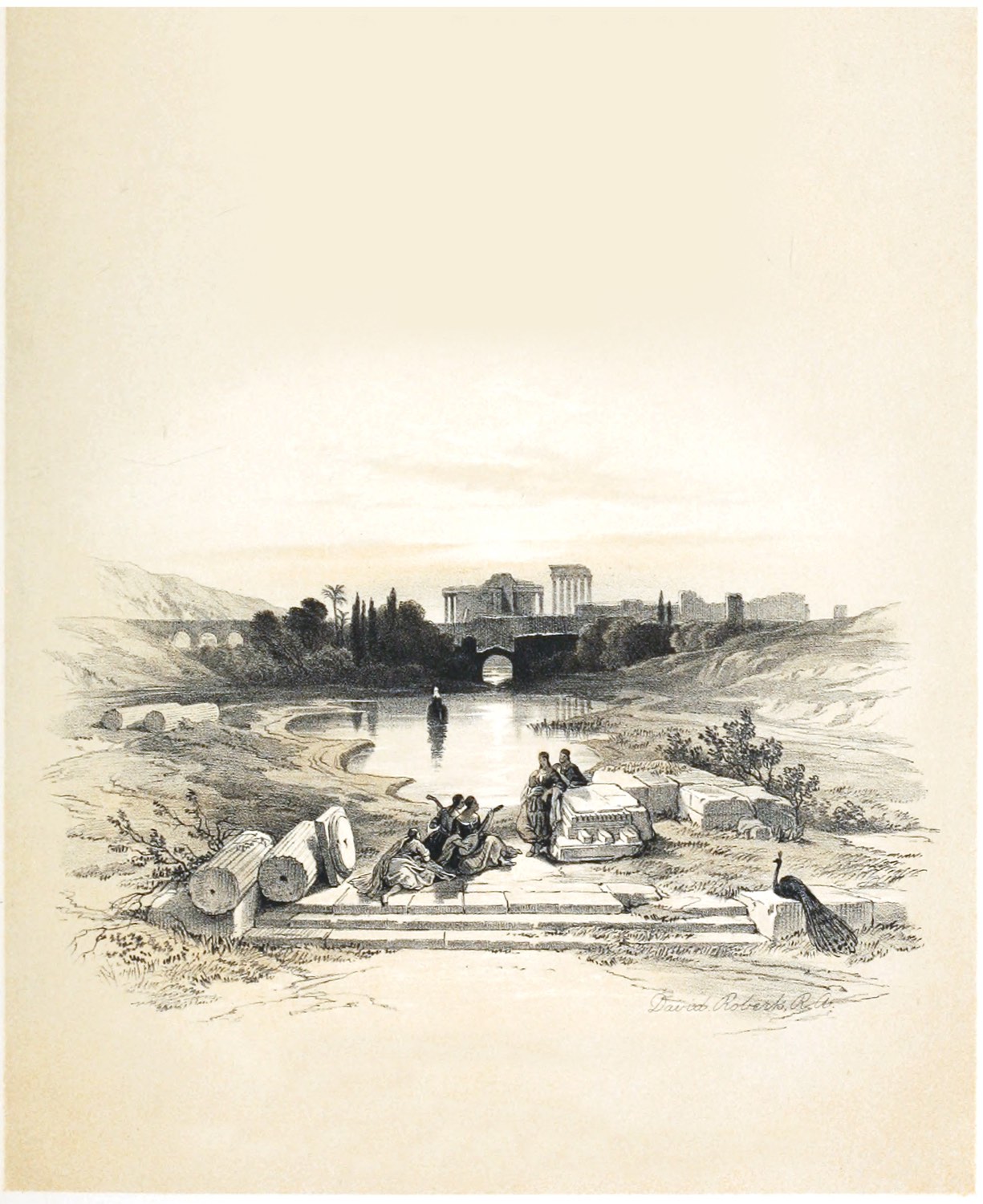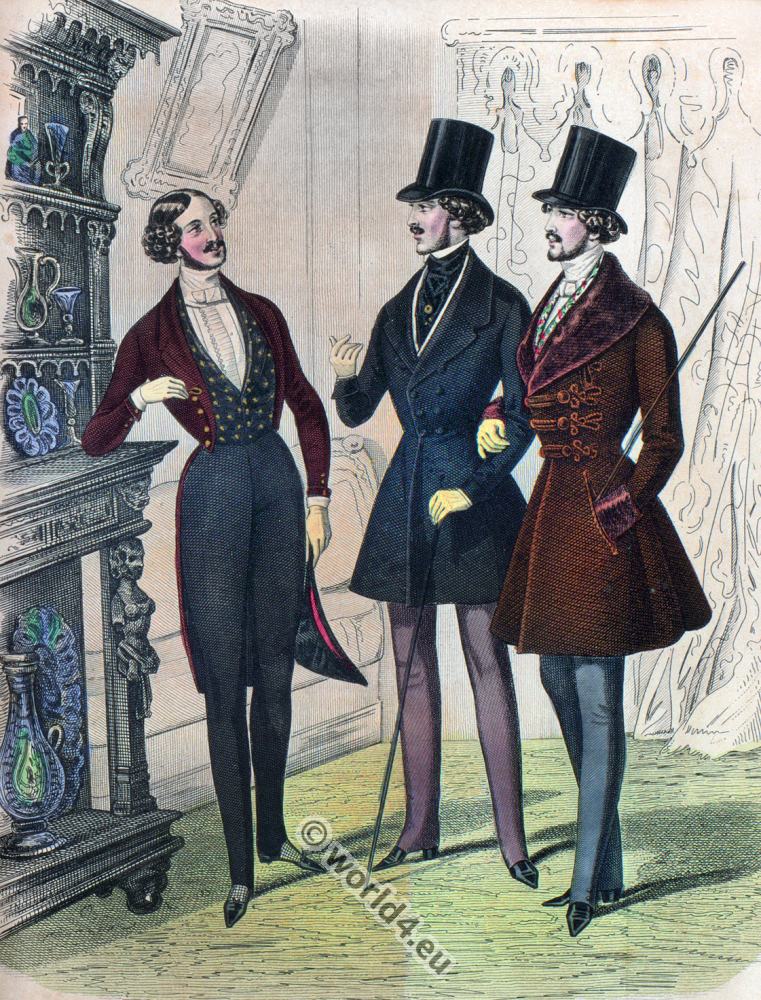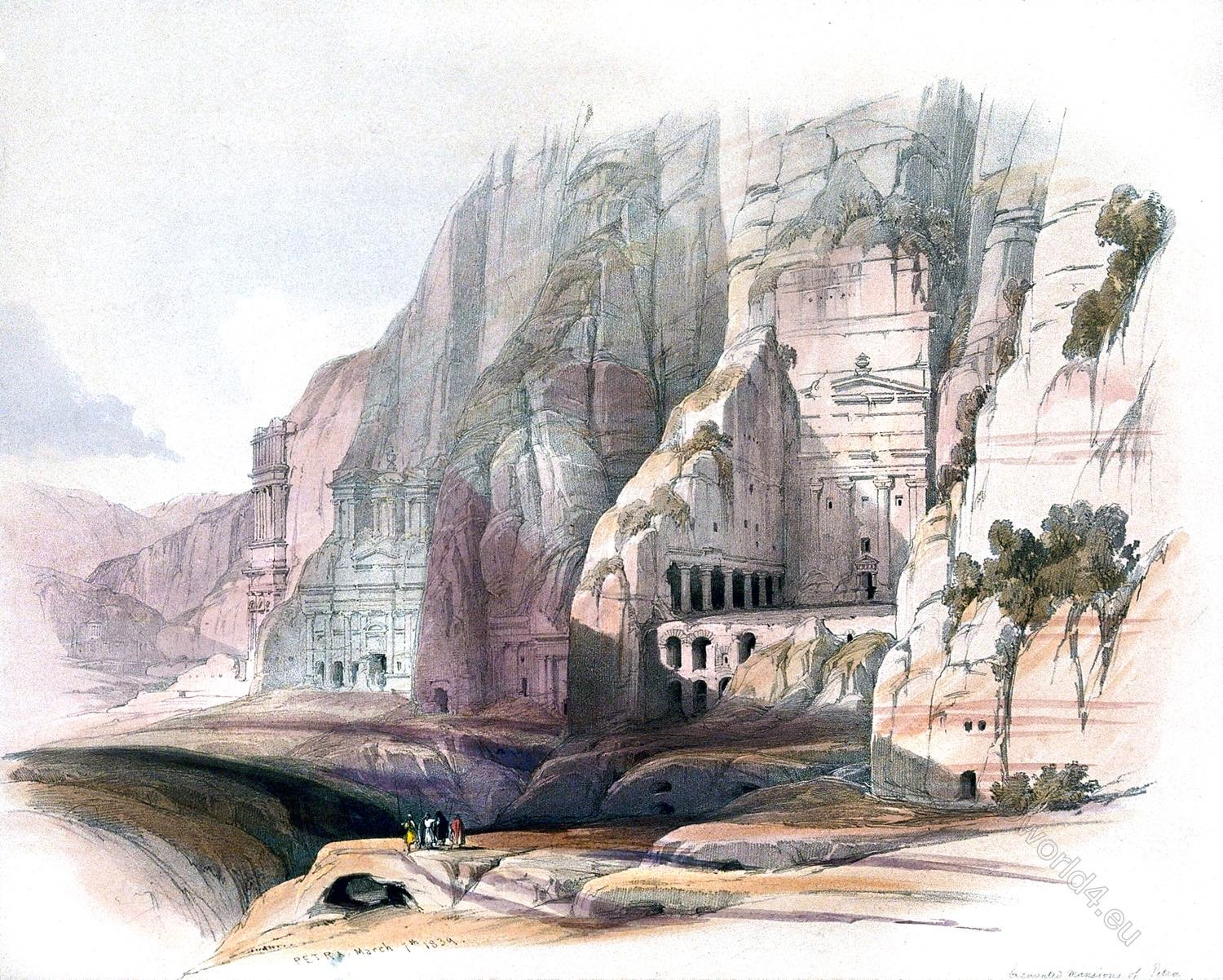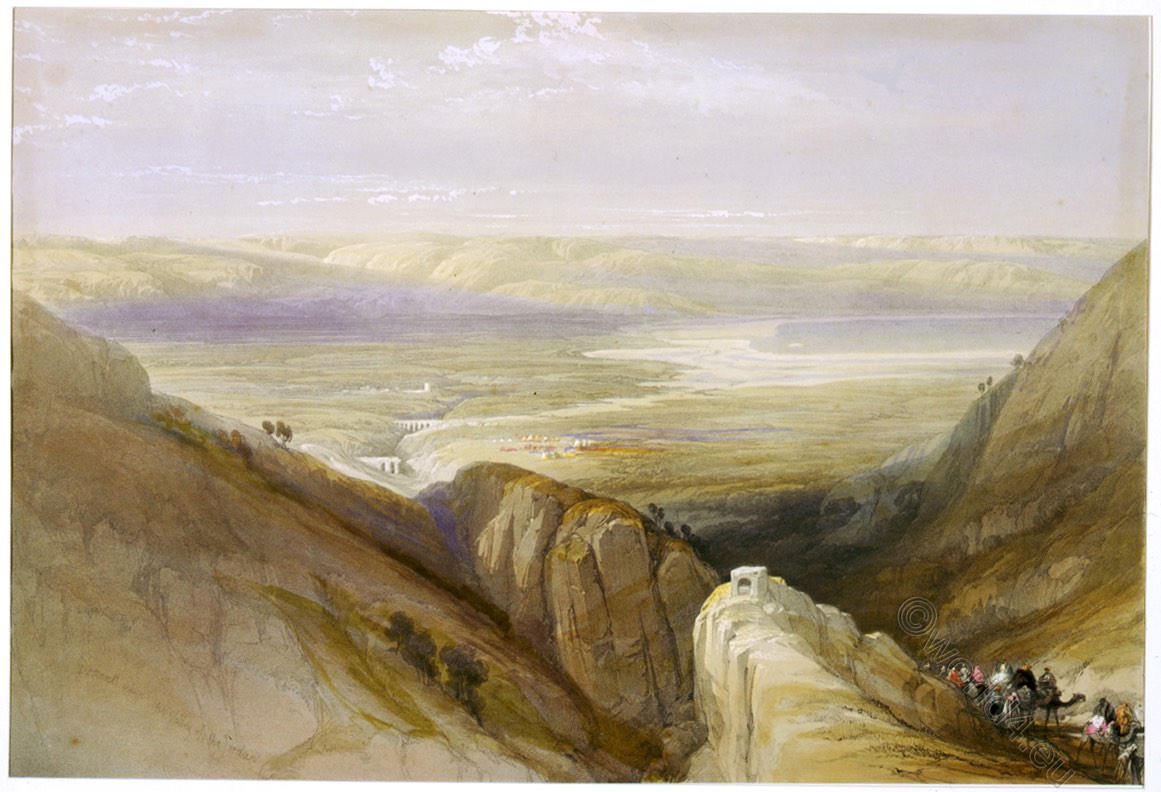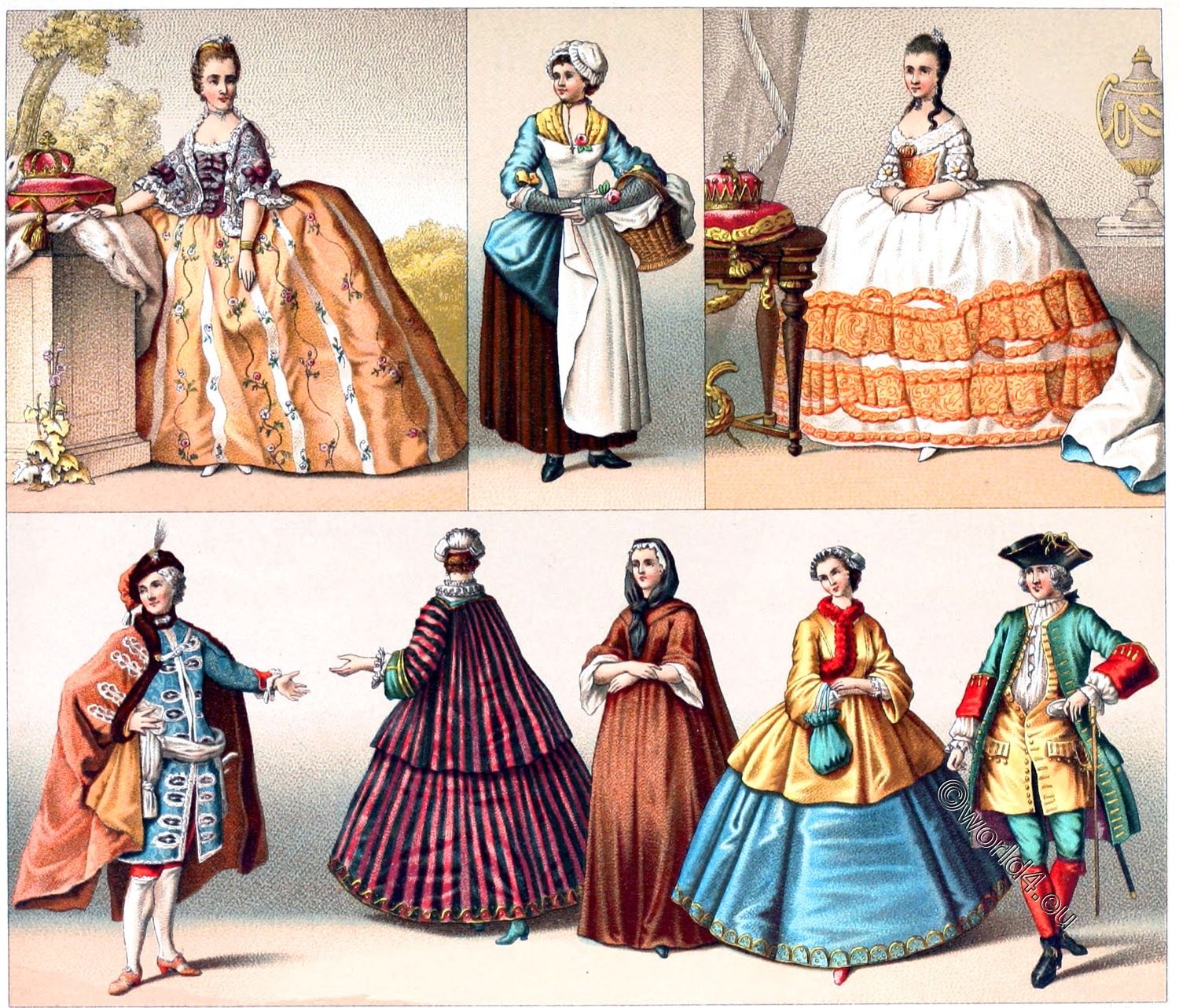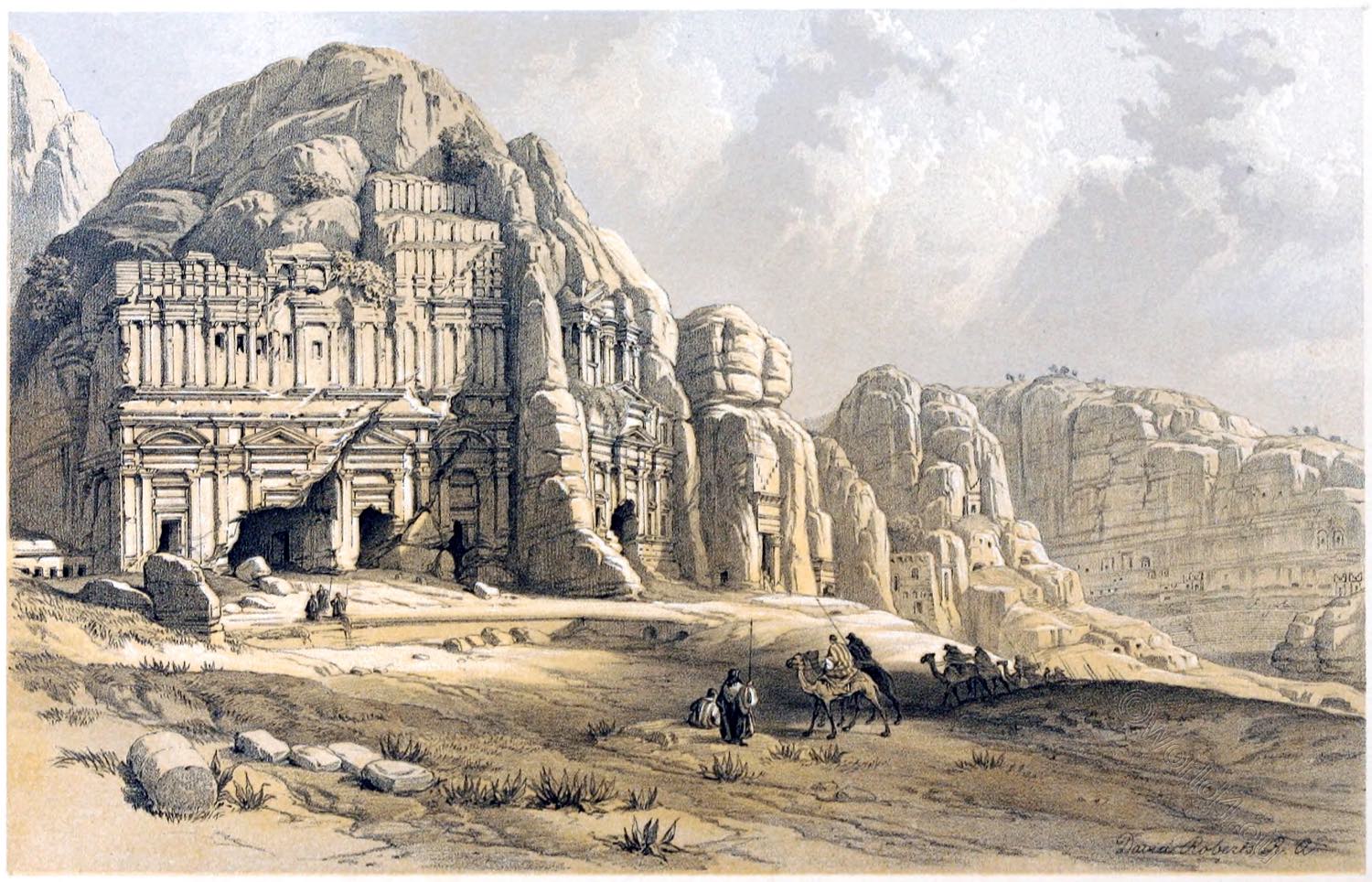
THE KUSR FARON
by David Roberts.
This gives the central view of the City. On the right lie the ruins of the Triumphal Arch, whose site was near the brook, and fronting to the east. Its style is florid and corrupt.
It seems to have formed the approach to the Palace, or pile of building in the centre, called by the Arabs Kusr Faron (Pharaoh’s Castle). Its age is dubious, but it has the distinction of being the only structure of mason-work now standing in the valley.
Joists of wood are, in different parts, let in among the courses of stone, intended, doubtless, to receive the fastenings for ornaments of stone or stucco. The walls are chiefly entire, but the columns of the northern front, which were composed of separate pieces, are gone.
The distribution of the ulterior into chambers and stories shows that it was not a temple. This edifice, even in its dismantled state, has an interest, from its probably supplying some idea of the general architecture of the larger buildings of Petra. South of the Kusr stands a lone pillar, the last of a temple, of whose other pillars the fragments he scattered around.
Those objects are the only relics in the midst of a great tract of ruins. The course of the brook, when it has emerged from the Chasm, is through a strip of level land, on the north and south of which the ground rises into irregular eminences, and those again backed by a steeper ascent.
It is this lower tract, half a mile square, which formed the actual circuit of the original City; the access being open on the north and south, where, however, we may presume that it was defended by walls, and the east and west being shut in by the cliffs, and capable of being approached only by the “Chasms.” 1)
The site was thus “an area in the bosom of a mountain, swelling into mounds, and intersected with gullies, but the whole ground of such a nature as might be conveniently built upon, and with neither ascent nor descent inconveniently steep.”
The whole area was once evidently occupied with buildings. Along the immediate edge of the stream, its wintry violence has cleared away the ruins ; but higher up, the whole space on both sides is covered with foundations and fragments. The stones are hewn, and the houses must have been solid and well built. They cover a space perfectly capable of accommodating thirty or forty thousand inhabitants.
To the left of the Kusr Faron is the rock which Laborde regards as the site of the Acropolis. The conjecture is probable, from the commanding position of the rock, and from the known habit of ancient nations to have a place of strength in the midst of their cities. But there is no further evidence. The crag is now inaccessible, though this does not preclude ascent in more ancient times. The Artist thinks that he discovered fragments of building on its summit. 3)
The rising ground on the left and front is covered with ruins. All the impressions created by the general aspect of this City are characteristic and forcible. The choice of the site may have been natural to a people desirous of security in ages of violence; for such a position, defended by resolute men, must have been impregnable.
The sublimity was the work of Nature; but the taste, the labour, and the ornament, were the work of man. “The most striking feature” is not so much in the existence of any one work of surpassing stateliness, as in their multitude, in the unwearied variety of such labours along the whole extent of the perpendicular rocks adjacent to the main area, and throughout the lateral valleys and chasms, the entrances of many of which are decorated with every imaginable style of architecture; many more, probably, remaining to reward the research of travellers in safer times. 3)
1) Biblical Researches, ii. 523. 2) Irby and Mangles. 3) Roberts’s Journal.
Source: The Holy Land, Syria, Idumea, Arabia, Egypt, & Nubia, by David Roberts (British, 1796-1864), George Croly, William Brockedon. London: Lithographed, printed and published by Day & Son, lithographers to the Queen. Cate Street, Lincoln’s Inn Fields, 1855.
Discover more from World4 Costume Culture History
Subscribe to get the latest posts sent to your email.

